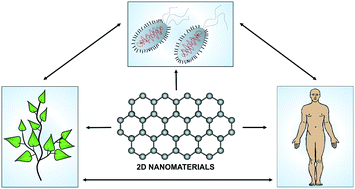Environmental impact and potential health risks of 2D nanomaterials
Abstract
The prospective intensive utilization of two-dimensional (2D) nanomaterials, such as graphene, transition metal dichalcogenides, and black phosphorus, increased the requirements for thorough comprehension of their potential impact on the environment and health. The unique properties of 2D materials originate from their parent material crystalline structure composed of vertically stacked layers. This enables the reduction of their thickness on the atomic layer scale while simultaneously changing their physicochemical properties. Layered nanomaterials are revealing their promising employment in a wide range of applications, from the fabrication of products for everyday use to water purification and applications in biomedicine. The degradation of such materials, their biocompatibility, and their effect on living organisms have begun to attract increased attention since their auspicious application potential is still increasing. Here, we summarize recent knowledge regarding the environmental and health risks of graphene-based materials, transition metal dichalcogenides, and black phosphorus. We have summarized the current progress and findings concerning their biocompatibility, nanotoxicity, and biodistribution, bringing awareness to the complexity of these phenomena.



 Please wait while we load your content...
Please wait while we load your content...